Sky Stream
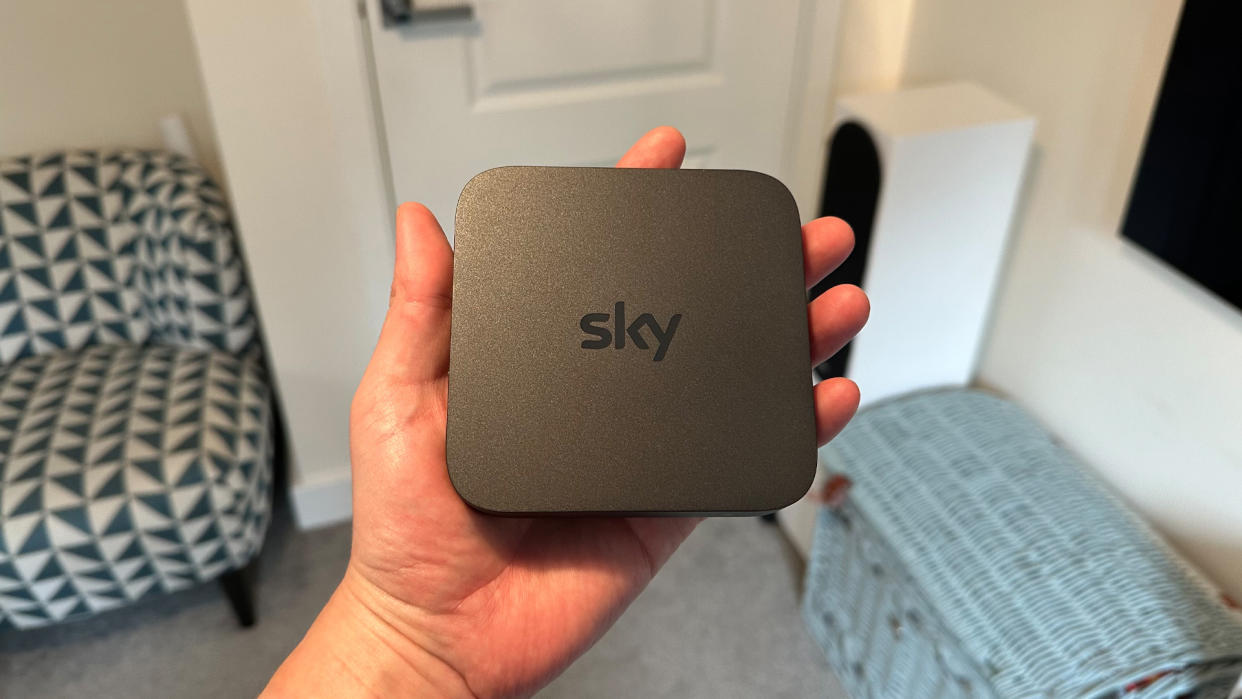
However much enjoyment you might get out of it, there’s no denying that up until recently getting Sky was a pain. You either had to book an engineer to come around to stick a satellite dish and associated cabling on your house – assuming you’re even allowed to do that to your building – and set your satellite receiver up. Or you had to buy a big Sky Glass TV (again requiring a visit by a Sky installation team) that you might not really have wanted just to get a streamed rather than a broadcast version of the Sky platform.
That all changed, finally, with the launch of Sky Stream. Thanks to this set-top streaming box there is at last a dishless (and slightly more affordable) way to enjoy Sky that you can set up yourself in moments. Cups of tea for installers busy drilling holes in your walls are no longer required.
Price
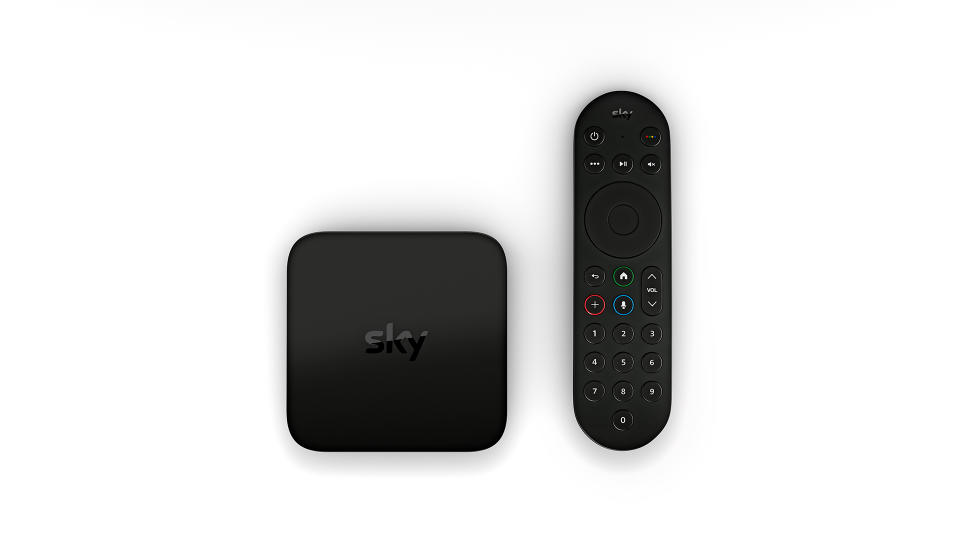
As with any Sky device, the Sky Stream pricing situation is complicated. Though we can say right up front that it’s the cheapest way to get Sky and Netflix together, with combined packages available from £26 a month.
Burrowing into the details, the first thing to take on board is that since in Sky Stream’s case you actually own the hardware, rather than ‘renting it’ as happens with Sky Q, there’s an up-front cost of £39.95. This only applies if you decide to subscribe to Sky on a month-by-month rolling basis, though. If you’re happy to take an 18-month minimum subscription, the up-front cost drops to £20.
You will need to take up some sort of subscription to get a Sky Stream puck, though. While you can buy a Sky Glass TV and then not use its Sky features, the Sky Stream essentially becomes a dead plastic box if you don’t have a Sky subscription attached to it.
If you go for the 31-day rolling contract option, you’ll need to pay at least £29 a month for that Sky sub, while if you go for the 18-month contract you’ll need to pay the previously mentioned £26 a month for the Sky Ultimate channel pack, which includes a (basic tier) Netflix sub. If you want to get Sky’s Cinema or Sports packs as well, you’ll need to pay extra for them. Sky Cinema (which currently includes Paramount+), for instance, costs an extra £11 a month if part of an 18-month contract subscription, or £13 with the 31-day rolling contract. Similarly, Sky Sports is £25 extra a month or £27.
More controversially, you’ll also have to pay £6 a month extra to enjoy 4K HDR video and Dolby Atmos sound from your Sky Stream, which most people reading this article very likely will want to be able to do, and another £5 if you want to be able to skip ads when watching on-demand and 'recorded' content.
Design
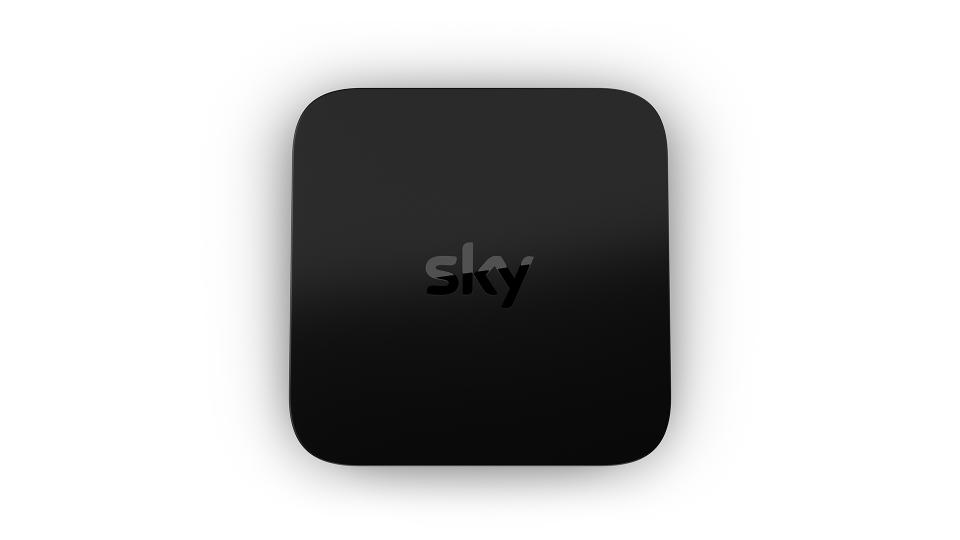
The most striking thing about the Sky Stream puck is how small it is. Hence Sky calling it a puck rather than a box, we guess. It’s about the width and depth of a typical drinks coaster, and only stands a couple of centimetres tall, too. In fact, with its matte black finish and glossy embossed Sky logo, it looks like an Apple TV 4K that’s been sat on by an elephant.
It has just four connections – and one of those doesn’t actually do anything. The ‘dead’ one is an RF tuner input: unlike with Sky Glass, there’s no way of using Sky Stream as a straight broadcast TV receiver – at least not yet. The other three ports are the power jack, an Ethernet port if your wi-fi’s a bit flakey, and, of course, an HDMI port.
Shipping with the Stream is the same likeable remote control you get with Sky Glass, complete with a mic button for voice control alongside all the other navigation and Playlist Addition buttons you need to easily navigate Sky’s proprietary Entertainment OS interface.
Sky Stream Puck tech specs

Max resolution 4K
HDR support HLG, HDR10, Dolby Vision
Max sound quality Dolby Atmos
Connections HDMI 2.1, Ethernet, Wi-Fi
Included accessories Voice-capable remote
Dimensions (hwd) 1.8 x 11 x 11cm
Weight 0.1kg
You’ll also need to spend an extra £12 a month (plus the £39.95 cost of each extra box) if you want to have multiple Sky Stream pucks in your home to feed TVs in secondary rooms. You can have up to five extra pucks operating in your home for that single £12 monthly charge, for a total of six streams. Assuming your broadband connection can cope with so many potential simultaneous live video streams, of course.
With the monthly subs quickly starting to pile up for any AV fans wanting to really get the most out of the AV quality and range of content Sky’s platform delivers, it’s worth reflecting on how Sky Stream stacks up in value terms against other streaming services, for those are really what Sky is now competing with. It’s way more expensive than even the top tier of Netflix, for instance. Or Amazon Prime Video. Or Disney+. Or Apple TV+… Of course, though, none of those rival platforms support any streamed linear channels, never mind the hundred plus ‘live’ channels, including many exclusive (in the UK anyway) ones, that Sky Stream delivers.
Nor, most crucially of all, does any other streaming service in the UK provide anything like the same amount of live sporting content that Sky does. Its F1 and extensive football deals have long been seen by Sky as its crown jewels when it comes to justifying its subscription expense – an understanding it’s bolstered by advancing the presentation of these crown jewels via technologies such as 4K resolution, Dolby Atmos sound and, most recently, high dynamic range.
All in all, while all the streaming services out there have specific strengths and weaknesses, with Disney+ in particular currently smashing it for Star Wars and Marvel fans, Sky Stream does still offer substantially more overall with its combination of ‘broadcast’ scheduling, major live events, exclusive channels and huge library of both third party and home-grown content.
Features
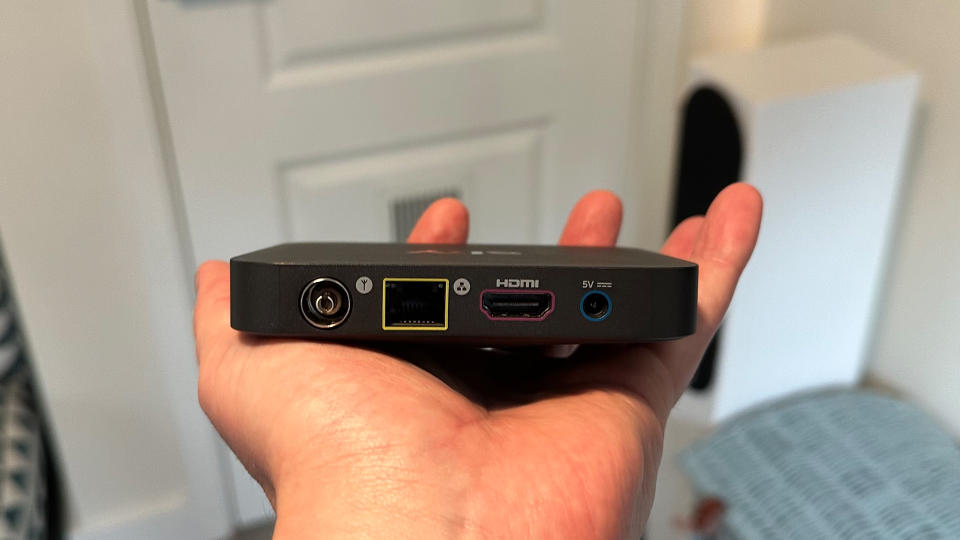
Sky Stream’s key selling point is that it lets people enjoy Sky’s subscription services, including its live channels as well as its on-demand content libraries, without the need for a dish. Everything, ‘live’ or otherwise, is delivered via online streaming. Even better, it makes this possible on any television with an HDMI port. No longer do AV fans who already own high-end TVs need to fork out for a less capable Sky Glass TV just to be able to get access to Sky over broadband.
The Sky Stream Puck delivers almost exactly the same experience, structure and features that you get with Sky Glass. Which is itself similar – but crucially not identical – to the interface long-term Sky subscribers will be familiar with from Sky Q satellite receivers. This is as you would expect given that Sky Glass and Sky Stream are built on the same ‘Entertainment OS’ software platform. In fact, the only really significant feature difference – apart from the Stream Puck not having its own screen or a built-in Dolby Atmos speaker system of course – is that the Stream doesn’t have a far-field microphone.
This means that you can’t open a conversation with the Stream simply by saying ‘Hello Sky’. You actually have to press the microphone button on the remote control to get the conversation flowing. This might sound like quite a small point, but Sky has itself been keen to talk up how much the far-field mic in Sky Glass has helped to drive engagement with its voice control features. Hopefully, the lack of a far-field mic with Sky Stream won’t deter users from engaging with its voice control system, though, as over the past couple of years, aided by endless (at least monthly) software updates, Sky’s voice recognition system really has become excellent in terms of the vocabulary it recognises, the shortcuts it makes available, and the content access options it unleashes.
Sky’s uniquely regular software update programme has continually tweaked and improved the Entertainment OS interface too, as we’ll see in a moment – but once you’ve got past the initial weirdness of talking to an electronic device, Sky’s voice control system really can be a fantastic shortcut to even the darkest, dingiest corners of the vast amounts of content Sky’s platform now holds.
The onscreen menus, meanwhile, not only look identical to those of Sky Glass, they seem to run identically too. By which we mean that they seem equally responsive and stable; there’s no sign that fitting the necessary electronics into a small puck has had any negative impact on Entertainment OS’s performance.
To give you a quick flavour of the Entertainment OS, the home screen opens with a window showing what’s currently playing on the last TV channel you selected (or most recent app and most recent channel watched) on the left side, with associated graphics and text filling the top third of the screen above it. Then there are direct links to ‘top picks’ that scroll off to the right of the Currently Playing window.
These picks tend to feel a bit more like recommendations of stuff that Sky – and Netflix etc – really want you to watch rather than stuff that’s truly been picked out on the back of analysis of your viewing habits.
Full-screen 'placeholder’ graphics for the content on this Top Picks row start to play after a time if you don’t select anything, which is surprisingly effective at making you potentially more interested in one or more of the highlighted shows. This Top Picks bar is very regularly changed by Sky’s ‘curators’, which again keeps things always feeling fresh and involving.
Directly below the Top Picks/Currently Viewing shelf is a row of boxes providing links to different genres of content, from TV Shows to Movies, Sport, Kids, News, Audio and Music, Fitness and International content. This is a handy touch for people who like a more conventional approach to content filtering and is the nearest the Sky Stream home screen gets to referencing the side-bar option menu that’s always present on Sky Q’s interface.
There are many other shelves of themed content you can scroll down to on the home screen, which at the time of writing includes such things as ‘Top 10 this week’, ‘Big stars on the small screen’, ‘Premier League highlights’, a selection of simple games, and a ‘Shocking stories’ tier. Though the exact nature of these shelves changes regularly.
Plus, tucked rather randomly in the middle of the content shelves is a tier devoted to all the third-party apps Sky carries, while right down at the bottom are links to the streaming box’s Settings, Search and Help features.
The Playlist shelf is arguably the single most important part of the Sky Stream experience. It’s here that any shows you highlight as something you want to watch from the electronic programme guide appear, along with shows you’re watching when you decide to hit the remote’s ‘+’ button. If you click into the Playlist rather than just accessing one of your recent manual ‘additions’ you can also access series that Sky Stream has ‘series linked’ or recommended because it thinks you might be interested in them.
The most important thing about the Playlist is that it essentially replaces the Record feature on Sky Q. The big difference being that stuff you choose to store is held on Sky’s own remote servers, rather than on local memory built into the Sky Stream box.
We have come across issues where a live event we select on the EPG doesn’t actually get added to the Playlist due to rights issues. Sky claims, however, that around 93 per cent of the content available on its streamed platform can now be ‘Playlisted’ for future viewing without issue.
In some ways even more frustrating, we've had several occasions when we've 'playlisted' a sporting event when watching live wasn't possible, only for the final few minutes to have been cut off. This isn't an issue we recall encountering with the traditional recording functionality of Sky Q.
Even without those very occasional but very frustrating occurrences, there are still plenty of times when we miss simply being able to record something locally and access it from a straightforward Recordings menu, as happens with Sky Q.
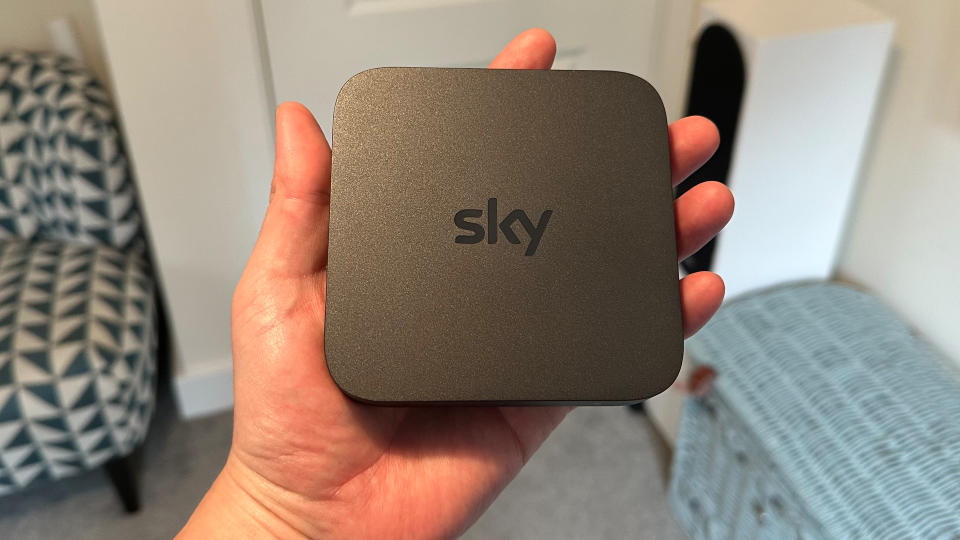
Not having to accommodate the Sky Q sidebar of menu links makes the Sky Stream interface feel cleaner, more immediate and more content-focused. Occasionally we do find ourselves struggling to remember where to find a particular content section on Sky Stream that would have been instantly visible on Sky Q’s sidebar. These moments are best and instantly solved simply by speaking to Sky Stream and asking it to find what we are looking for.
Life’s too short to detail all the menus and options that Sky Stream, like Sky Glass, offers, but it’s certainly key to stress just how freeing, logical and ‘right’ it feels to have an interface that blurs the lines between ‘live’ and on-demand content as fulsomely as Entertainment OS does. Netflix stuff sits right alongside Amazon Prime Video stuff which sits right alongside Disney+ stuff which sits right alongside Apple TV stuff which sits right alongside BBC iPlayer stuff, which sits right alongside both live broadcast stuff and the previously shown stuff that’s now part of Sky’s mind-bogglingly vast content archive.
Another neat trick associated with taking an all-streamed approach to content is that if you start watching something playing on Sky’s ‘live’ channels after it’s started, you can simply opt to play it from the beginning via Sky’s servers. However, there have been several times during our time living with Sky Stream when this hasn't worked as it should, with programs not jumping back to the start as they should or, in fact, not being available on-demand when they should. This seems to be a particular problem with the Formula 1, which is particularly frustrating and baffling.
One negative point if comparing Sky Stream (and Sky Glass) to Sky Q is that the latter carries substantially more channels. More than 500, in fact, versus less than 200 on Sky Stream. Most of the difference here is down to Sky Stream not needing to list SD channel versions separately, or not needing to provide ‘+1 hour’ versions of channels since everything on Sky Stream can be accessed at any time. There are, though, still a fair number of genuine – if, typically, very niche – channels found on Sky Q that aren’t found on Sky Stream. Sky tells us that it’s constantly working to sort the rights out to channels that currently aren’t running on its streamed service, and it’s certainly true to say that it’s onboarded a healthy number since Glass first came out in October 2021.
The most important takeaways from using Sky Stream are simply that aside from the missing far-field mic it functions identically to the interface on Sky Glass. In doing so, it delivers for the most part arguably the most curated, content-focused and content-neutral interface in the TV world; and perhaps most importantly of all, it’s almost constantly being improved and tweaked in response to consumer feedback and analysis of user trends.
This latter point is key to Sky not (so far, anyway) launching a Sky Stream app that might allow users to access Sky’s full services via an app built into a third-party TV smart interface. Sky almost obsessively wants to have complete control over not just the delivery of its content but also user data, so that it can deliver better improvements more regularly than it would almost certainly be able to if it was only running an app on third-party hardware.
Performance
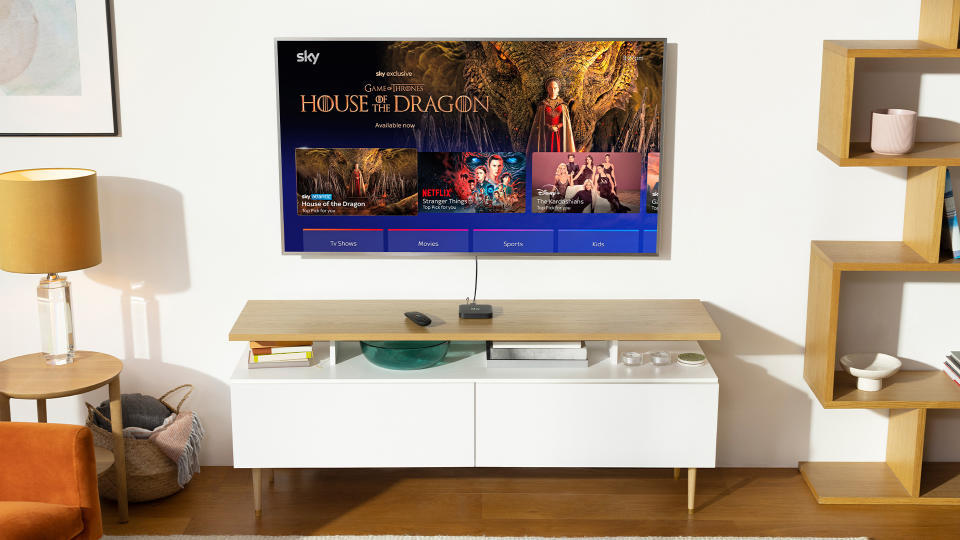
As an experiment, we plug the Sky Stream Puck into one of the HDMI sockets of our Sky Glass TV. It quickly becomes clear that there’s no discernible difference between the picture and sound quality achieved from streams playing into the Sky Glass via the Sky Stream box, and Sky Glass’s own ‘built-in’ streams. Regardless of whether the streams are HD, UHD, SDR, HDR, 5.1 or Dolby Atmos.
Parity of this sort is crucial to Sky Stream’s success given that many consumers who buy it will be doing so because they want to be able to experience Sky’s often impressive quality standards on their own high-quality TV.
When it comes to streaming lag compared with Sky Q, meanwhile, the Sky Stream is marginally slower than Sky Glass. Fortunately, there’s barely a second in it – but that does mean, of course, that like Sky Glass, Sky Stream delivers ‘live’ images between 25 and 30 seconds behind the time they take to appear on Sky Q boxes. For some people, this will be a non-issue, for others, particularly hardcore football fans, it will be a major strike against Sky Stream. We've lost count of how many Premier League goals have been spoiled by a phone notification – often from Sky's own Scores app – that's arrived before it's been shown on screen.
Arguably the most important point about the Sky Stream puck, though, is that having confirmed that nothing in its hardware architecture introduces any substantially negative aspects to Sky’s streams that you don’t get with Sky Glass, Stream enables us to experience those streams on truly premier TVs. TVs such as top-tier OLED and Mini LED TVs capable of delivering more dynamic HDR and wide colour performance, better black levels, better sharpness and better motion clarity than Sky Glass’s screen does.
Comparing Sky Stream’s picture quality against Sky Glass on one mid-range OLED and one mid-ish range Mini LED TV brings home just how impressive Sky’s streamed service is capable of looking, regardless of whether you’re watching ‘live’ or archived content. On our two premium non-Glass TVs you can really appreciate how crisp much of Sky’s native 4K content looks, how rich colours can get with its HDR ‘broadcasts’, and how good contrast often looks. Unless you’re watching a dark scene in House Of The Dragon, anyway.
More surprising now that we can separate Sky’s streamed service from Sky Glass is how good Sky Stream’s pictures look compared with Sky Q’s broadcasts. With native 4K content the quality is pretty similar, but with many HD channels, especially those that use relatively high levels of compression on Sky Q, Sky Stream actually looks substantially better. Slightly sharper and much cleaner – especially when it comes to so-called ‘mosquito’ fizzing noise. Skin tones on background faces can look a bit more plasticky on Sky Stream than they do on Sky Q, but Sky Stream’s superior suppression of compression artefacts easily wins the day.
This could actually be the single most tempting thing about Sky Stream for Sky Q users who’ve long struggled with the levels of noise many sub-4K Sky Q channels can suffer with.
While picture settings on Sky Stream are understandably limited (make sure yours is set to output 4K if you’re using it with a 4K TV and paying for the 4K subscription), we’d strongly recommend you take a moment to turn on the ‘Reduce judder with apps’ feature, as without it you will find playback from third-party apps routinely affected by really distracting amounts of stuttering whenever there’s motion in the frame. The Reduce judder option can introduce a touch of softness into areas of motion, but this is a minor issue that’s much less distracting than the stuttering you get with the judder reduction feature left in its default ‘off’ position.
One last aspect of the Sky Stream service performance to cover is its level of Dolby Vision and Dolby Atmos support with the third-party apps it carries. After all, to get the absolute maximum effectiveness out of Sky Stream’s interface you’ll want to use it for as much of your whole home entertainment experience as possible, accessing third-party app content from it as well as Sky’s own content. Thankfully, all of the major apps that ordinarily support Dolby Vision and Dolby Atmos do so via the Sky Stream Puck.
Verdict
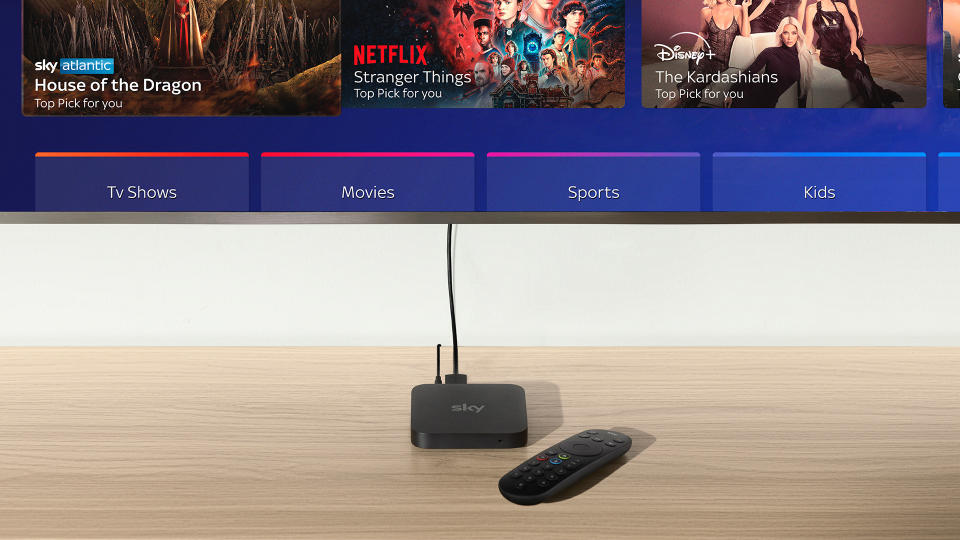
Sky Stream provides satellite dish-free access on any TV of your choice to the same unique Sky mix of 150-plus live channels, unmatched quantities of premium live sport, fully integrated third-party streaming service and vast library of on-demand movies and TV shows for which Sky has long been renowned.
It offers all this through Sky’s impressively content-focused, platform-neutral and ever-improving interface, too, and all without compromising Sky’s AV standards. In fact, its HD picture quality in particular comfortably outperforms that of the Sky Q satellite broadcasting platform.
It’s true that despite being the cheapest way of getting a joint Sky Ultimate and basic Netflix subscription, Sky remains an expensive content option compared with typical streaming services such as Netflix and Disney+, especially when you add in irritating extras such as the 4K/Atmos charge and post-18-months ad-skipping charge. Sky’s platform does, however, offer something substantially different (and bigger) than any of those typical streaming services do.
There are some small issues – such as the lack of a far-field mic, the 30-second or so delay and occasional issues related to the 'Playlist' approach of 'recording' content – that mean Sky Q remains the top subscription TV service, but for those who can't or won't get a dish, Sky Stream is an excellent option.
SCORES
Value 4
Features 5
Performance 5
MORE:
Read our Apple TV 4K (2021) review
Also consider the Amazon Fire TV Stick 4K
Read our Sky Q review
These are the best video streamers
